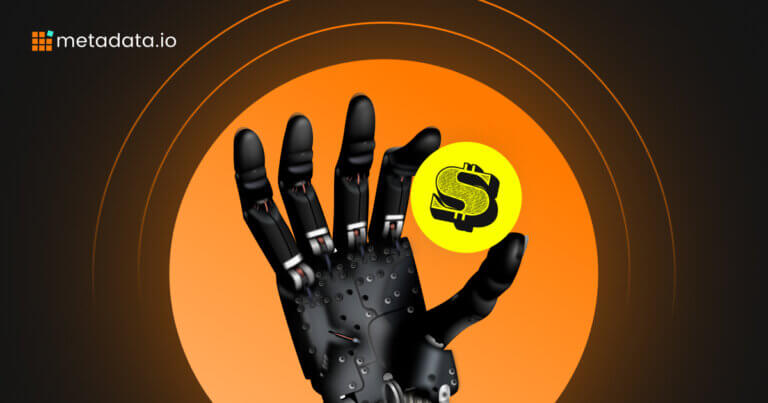Why AI and Automation Won’t Take Your Job
Computers will never be like humans. Humans don’t like to do mundane, repetitive tasks – tasks that computers don’t mind at all! But as soon as you call computers AI and start infusing AI into marketing systems, people start to worry about their job security.
AI won’t take over our jobs–the right AI technology should complement, and not replace the marketer–but we’re definitely going to start seeing more and more of it. We should start thinking of AI as a “force multiplier” for job roles across the board; something that increases the output of the marketers. Human marketers and AI are both needed to sustain the future of the industry.
A CMO shouldn’t be wasting time digging into excel spreadsheets. This is where automation comes in. A robot can take care of the most tedious tasks, freeing up time to add more value for business alignment.
The role of today’s marketer is to be both an expert in automated technology, and perhaps more importantly, to still be human–able to connect and empathize with customers at every point of engagement. Humans have vision, strategy, incentives, and creativity, all skills a machine could never automate.
Why AI Won’t Replace You
The invention of the calculator didn’t erase the need for mathematicians, and Photoshop didn’t make graphic designers obsolete. Each tool left professionals with more time to focus on what they most enjoyed about their work. Likewise, marketers shouldn’t fear the increasing adoption of AI. They should wield it as strategic marketing support that allows them to focus on what they’re best at—strategy and creativity. AI is like the personal assistant you always wanted; the intern’s intern, so even they can focus on marketing instead of the mundane.
Most importantly, machine learning systems need marketers. Computers can’t do creative. They do well with facts but freeze in the face of feelings. They can’t understand how to create FOMO or incite emotional triggers, and marketing without these human elements is just ads.
As marketing moves from a place of spray and pray to something much more personalized through microsegments, marketers–the people–will be more crucial than ever. Marketing will start to require a broad-based, finite, targeted approach. The game will shift from getting one message to one person, to 20 messages to 20 groups of people.
The Emerging Patterns From the Digital Rise
To know where we’re going, it’s important to understand how the rise of technology has shaped marketing. The last couple of decades have seen a lot of changes in how brands have utilized improvements in AI.
New technology has increasingly meant more interactive ad experiences for consumers.
At first though, technology was typically managed by IT groups, who didn’t have marketers’ senses for how to use it to better understand customers. When analytic data came in, IT analysts filtered through it in attempt to decode consumer behavior. Based on that data, brands began to make changes to personalize their customer experience, improving engagement and converting more people.
Gradually, it became apparent that data, in the right hands, could mean much more than better engagement. This is when businesses began warming up to AI–a computer could not only surface data, but also take actions based on that data and a set of rules.
Creating the Rules for AI
As soon as people realized the potential of pairing marketing strategy with data-based decisions, AI became a critical component of marketing tech stacks. Unrestricted access to data helped AI spread even faster. Companies became more creative as they experimented with systems to leverage that data and solve increasingly complex problems.
Still, the full power of marketing automation wasn’t yet realized. The marketer was tasked with a slew of repetitive new tasks, pushing the “next” button as data seemed to dictate. For a while, it was like the marketers themselves had become the machine. As they began to grow restless, wanting to go back to doing what they did best, the rules of data-based decision making became apparent. It was so easy, it seemed, that a computer could do it.
AI is ultimately a computer listening to all the data it can access and structuring it in a way that makes sense. With some form of human rules-based input, it’s able to easily act on the data. This was the first wave of AI in marketing.
Embracing The Automation
Even with the rise of the marketing stack, we’re not expected to have the technical depth that IT requires. And even though MarTech platforms are built for marketers with limited technological understanding, the platforms are getting more complicated by the day. The mundane task of hand-coding or imputing wastes valuable time. With more advanced automation, marketers can oversee and configure the technology without being the technology themselves.
Automation can free up time that marketers spend carrying out the repetitive tasks, so that they can focus on real, performance-driving activities. Take launching a single campaign on LinkedIn and Facebook: way too often, this is a time-consuming nightmare. The right AI can combine inputs without any hassle and launch campaigns across platforms, so you’re only working in one interface.
If marketers embrace the fact that we can control our technological destiny, we can use machine learning to predict and shape consumer behavior like never before.
Looking to the Future
AI is not the silver bullet. It can take care of the mundane, but it still requires a human operator to help create the rules. Likewise, deciphering data in excel sheets is exhausting even to the most experienced marketers. Why waste energy on something that can be automated when you can be harnessing marketers’ creativity, skill, and human connection?
Martech is here to help make difficult processes easier and measure the impact of marketing activities. Don’t be afraid of it. Let it help you do your job better and smarter.
Jason Widup, VP of Marketing


